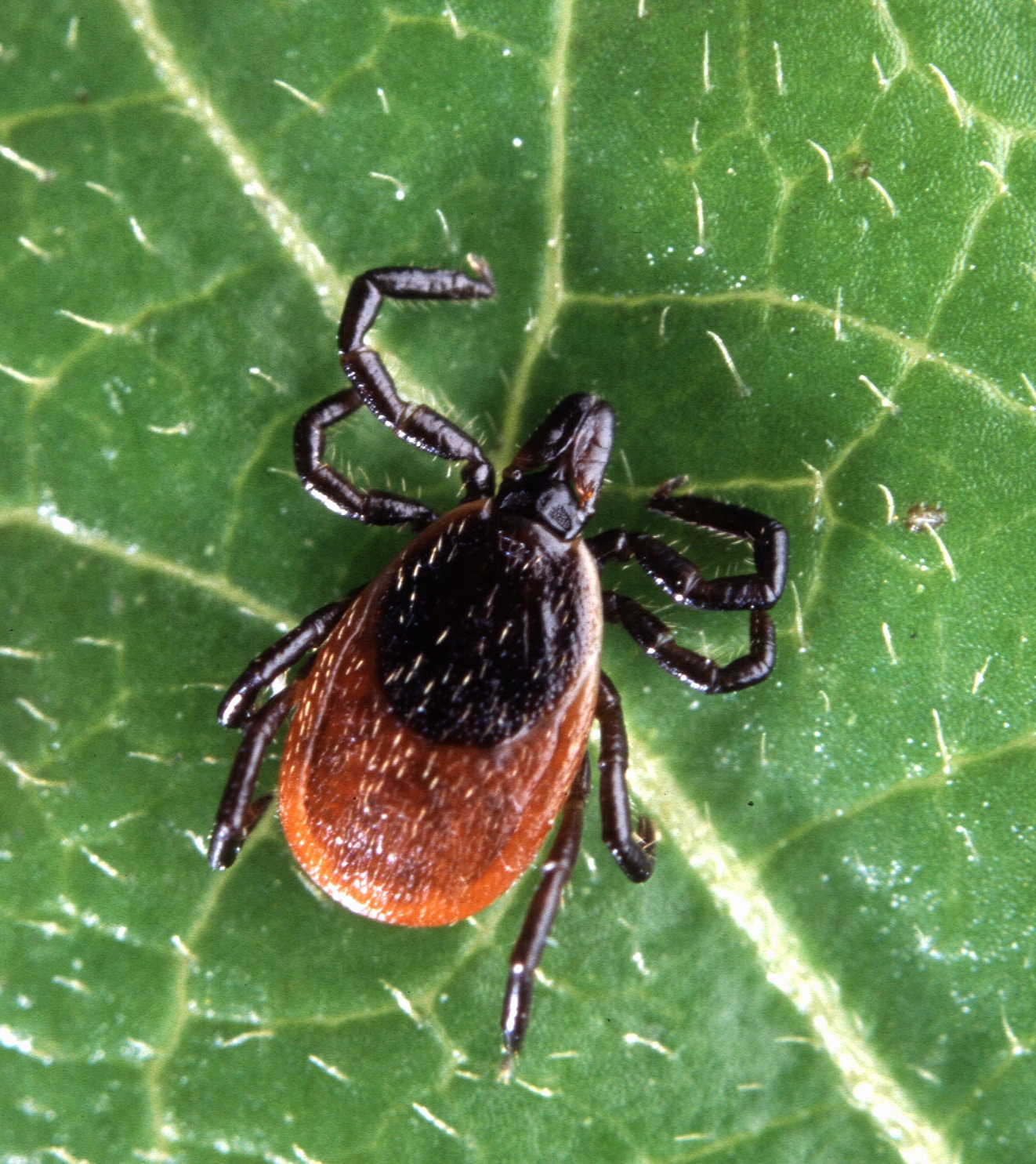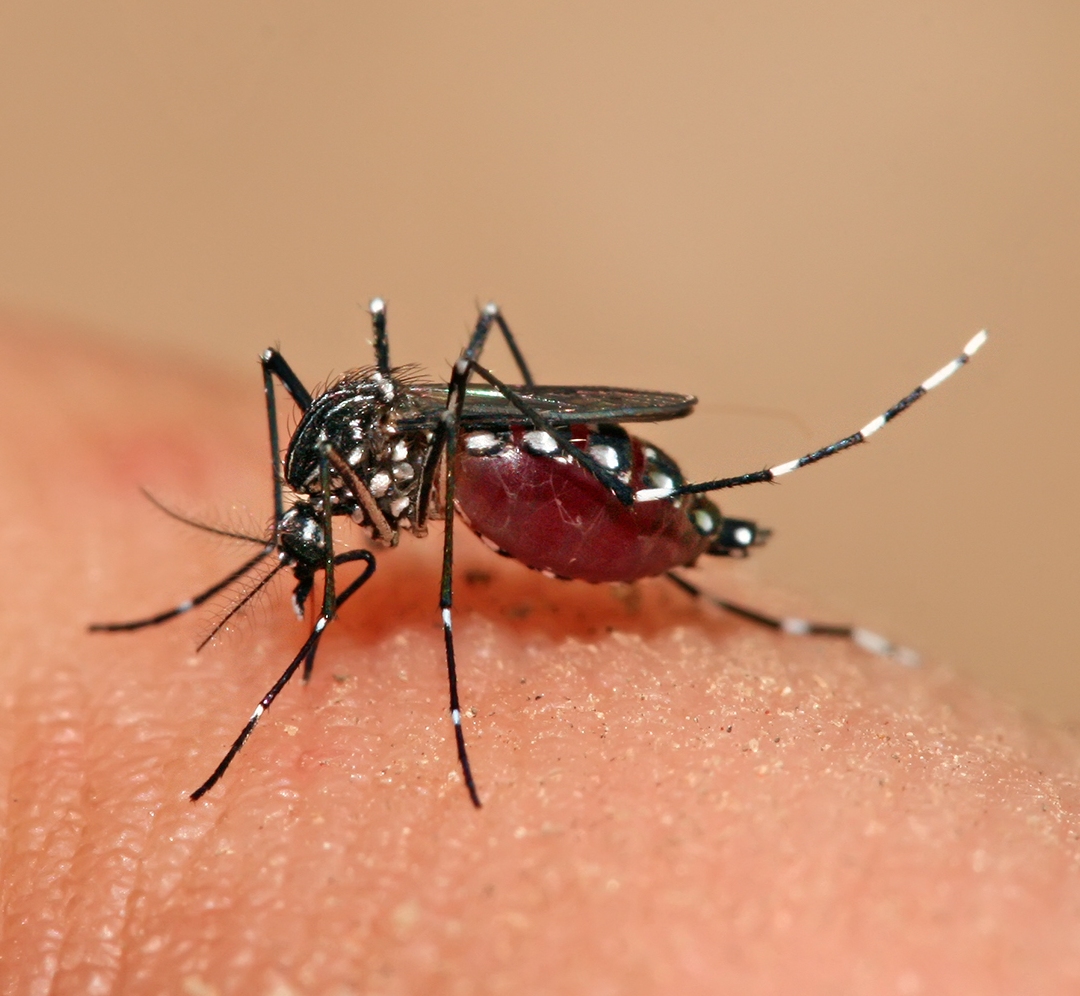Human Health Effects
Human Disease and Mortality
Scientific data on the increase of Earth’s temperatures are conclusive: The Earth is warming. Climate change involving warmer temperatures increases the likelihood of diseases caused by microorganisms, animals, and insects. Why? Because more frequent warmer temperatures enlarge the areas where these disease-causing organisms can grow.
 We are now seeing diseases caused by microorganisms, animals, and insects in regions where these diseases weren't reported before. The insects, rodents, or other animals such as ticks and mites that carry the diseases could never have survived in the region before the climate change. With warmer temperatures, vectors (an insect or other organism that transmits a pathogenic fungus, virus, or bacterium) are able to survive, and the disease is carried in with them. Droughts combined with bouts of heavy precipitation favor population explosions of disease-causing organisms. The world’s poor and children are most affected. More than 90 percent of malaria and diarrhea deaths occur in children 5 years or younger.
We are now seeing diseases caused by microorganisms, animals, and insects in regions where these diseases weren't reported before. The insects, rodents, or other animals such as ticks and mites that carry the diseases could never have survived in the region before the climate change. With warmer temperatures, vectors (an insect or other organism that transmits a pathogenic fungus, virus, or bacterium) are able to survive, and the disease is carried in with them. Droughts combined with bouts of heavy precipitation favor population explosions of disease-causing organisms. The world’s poor and children are most affected. More than 90 percent of malaria and diarrhea deaths occur in children 5 years or younger.
These climate-sensitive diseases are killers. West Nile virus, cholera, hemorrhagic fevers, malaria, and typhoid fever kill thousands each year. Millions more die from changing climate conditions that affect clean air and water, sufficient food supplies, and basic shelter.
Read about some of the diseases and/or conditions that are increased because of global climate changes. Use the Related Links in this module to investigate and report on other diseases that may spread thanks to global climate changes.
Asthma
The number of people with asthma in the United States has quadrupled in the past two decades, partly because of climate factors. For people living in the Caribbean Islands, clouds of dust from Africa sweep across the Atlantic and cause respiratory illnesses. Warmer ocean waters further warm the climate and increase the levels of plant pollen and soil fungi.
Malaria, Ross River Virus, and West Nile Virus
 Malaria is carried by the Anopheles mosquito. Any warming of the environment increases its survival range, rate of reproduction, and the number of blood meals it needs. The more blood meals, the more times these mosquitoes pass on the disease.
Malaria is carried by the Anopheles mosquito. Any warming of the environment increases its survival range, rate of reproduction, and the number of blood meals it needs. The more blood meals, the more times these mosquitoes pass on the disease.
All three of these diseases are temperature sensitive because the insects that carry the pathogens are temperature sensitive.
Image source: http://en.wikipedia.org/wiki/File:Malaria.jpg
Cholera
 Cholera is caused by the bacterium, Vibrio cholerae. Main symptoms include diarrhea, vomiting, and abdominal pain. Cholera is a major cause of death in the world and is transmitted primarily through contaminated drinking water and food.
Cholera is caused by the bacterium, Vibrio cholerae. Main symptoms include diarrhea, vomiting, and abdominal pain. Cholera is a major cause of death in the world and is transmitted primarily through contaminated drinking water and food.
Image source: http://en.wikipedia.org/wiki/Cholera
Lyme Disease
 Global increased temperatures could change the feeding patterns of ticks that carry Lyme disease, according to Yale University scientists. Some disease experts think that climate changes have extended the tick season in some eastern regions.
Global increased temperatures could change the feeding patterns of ticks that carry Lyme disease, according to Yale University scientists. Some disease experts think that climate changes have extended the tick season in some eastern regions.
The number of new Lyme disease cases has increased dramatically. The Centers for Disease Control (CDC) has estimated that up to 50 percent of deer ticks are Lyme carriers with the feeding cycle being heavily influenced by climate.
Lyme disease is easily treated with antibiotics, but diagnosis is difficult. Symptoms may be vague, and most doctors are not familiar enough with the range of Lyme disease symptoms to diagnosis the disease early enough for effective treatment.
If not treated early enough, the infection enters the bloodstream, and more severe symptoms result. Fevers, extreme fatigue, anxiety, and chronic pain with long-term complications such as facial contractions, shooting pain, heart irregularity, and arthritis can occur.
Image source: http://en.wikipedia.org/wiki/Lyme_disease
Hantavirus
 Incidences of hantavirus infection have increased in the past decade. Few cases were reported in Spain, Portugal, Italy, Greece, and Western Russia before 1997. Since then, cases have increased dramatically. Hantavirus infections occurred seemingly spontaneously in Belgium, Germany, France, and the Netherlands in 2005; scientists are not sure why. There might be a link between the bank vole (a small rodent, pictured left) and observed temperature and precipitation changes. The changes increase the amount of mast seed, the main food of the bank vole. Favorable conditions for the bank vole increase reproduction and, therefore, the spread of the hantavirus spread by the vole.
Incidences of hantavirus infection have increased in the past decade. Few cases were reported in Spain, Portugal, Italy, Greece, and Western Russia before 1997. Since then, cases have increased dramatically. Hantavirus infections occurred seemingly spontaneously in Belgium, Germany, France, and the Netherlands in 2005; scientists are not sure why. There might be a link between the bank vole (a small rodent, pictured left) and observed temperature and precipitation changes. The changes increase the amount of mast seed, the main food of the bank vole. Favorable conditions for the bank vole increase reproduction and, therefore, the spread of the hantavirus spread by the vole.
Image source: http://en.wikipedia.org/wiki/Bank_vole
Dengue Fever
 Dengue fever is carried by more than 130 species of mosquitoes. Cases occur year-round in South and Southeast Asia, Central America, and the Western Pacific. Higher temperatures increase insect survival time, rates of reproduction, and viral development. Lately, the mosquitoes have adapted to more urban environments.
Dengue fever is carried by more than 130 species of mosquitoes. Cases occur year-round in South and Southeast Asia, Central America, and the Western Pacific. Higher temperatures increase insect survival time, rates of reproduction, and viral development. Lately, the mosquitoes have adapted to more urban environments.
Researchers found that dengue fever increased 2.6 percent for every one week after every 1 degree Celsius increase in temperature and 1.9 percent with every centimeter increase in weekly precipitation.
Some dengue fever risks may be attributed to people’s response to climate factors. For example, droughts in Australia led to the construction of water tanks to help with water resources. The water tanks became breeding grounds for mosquitoes carrying dengue fever.
The disease, which can be treated if diagnosed quickly, has hit particularly hard in the Americas, where the number of cases increased from 66,000 in 1980 to 552,000 in 2006, according to the Pan American Health Organization.
Image source: http://en.wikipedia.org/wiki/File:Aedes_aegypti_feeding.jpg
Tick-borne Encephalitis
 Cases of tick-borne encephalitis increased by 400 percent in the last 30 years. The disease is carried by hard ticks and requires a relative humidity of 80 percent to prevent drying out. Milder winters and longer spring and autumn seasons create favorable conditions for increasing tick populations.
Cases of tick-borne encephalitis increased by 400 percent in the last 30 years. The disease is carried by hard ticks and requires a relative humidity of 80 percent to prevent drying out. Milder winters and longer spring and autumn seasons create favorable conditions for increasing tick populations.
Elevation is a major factor for this disease. The ticks that carry this strain of encephalitis could not survive in higher elevations if the temperatures were too cool. The tick is now surviving in elevations that are warmer, and the disease has been reported in areas that previously had no disease incidents. The tick habitat range has expanded into regions of Germany, Hungary, Switzerland, and the Netherlands.
Image source: http://en.wikipedia.org/wiki/Tick-borne_encephalitis
Examples of Environmental Changes Affecting the Occurrence of Various Infectious Diseases in Humans

Source: Climate change and infectious diseases, World Health Organization



